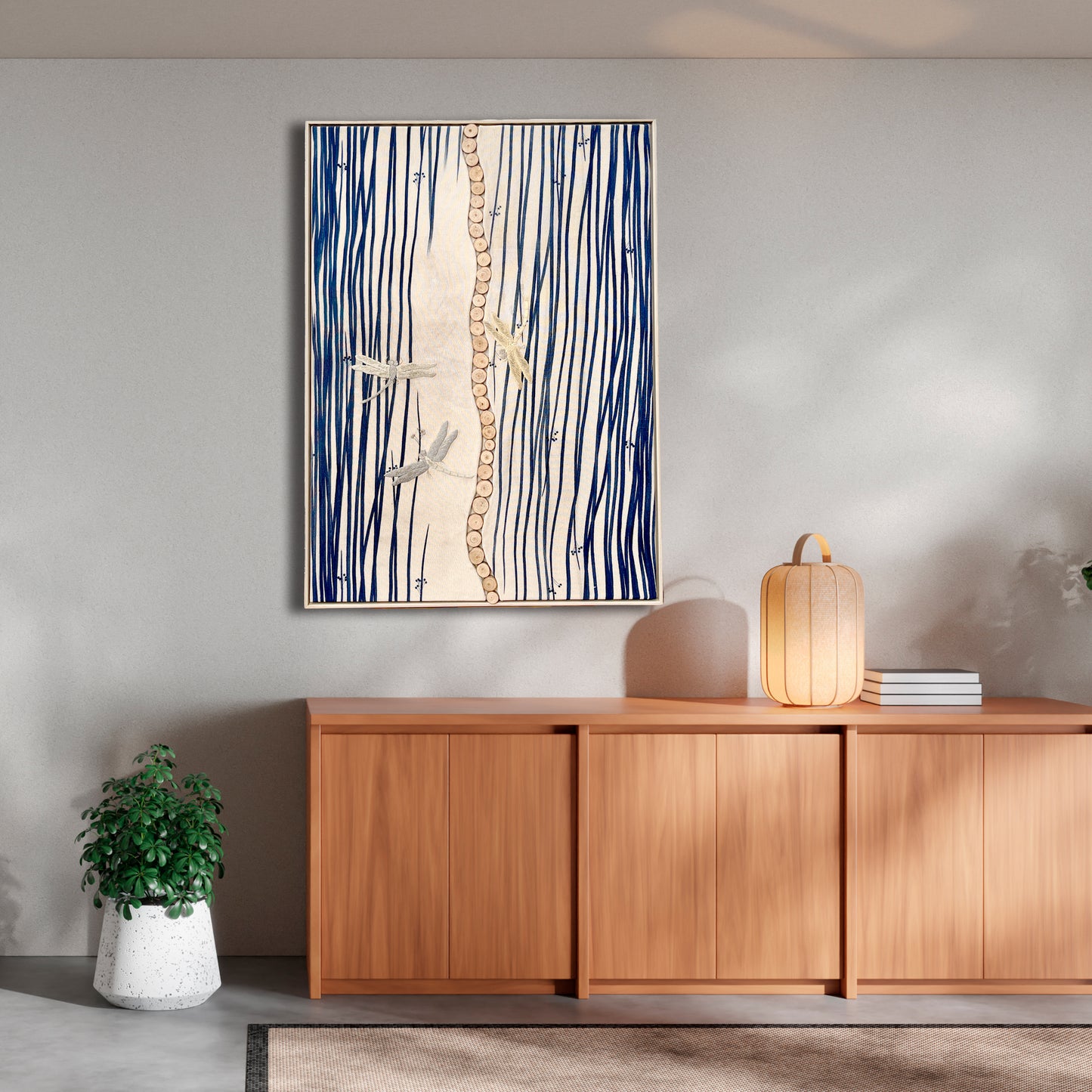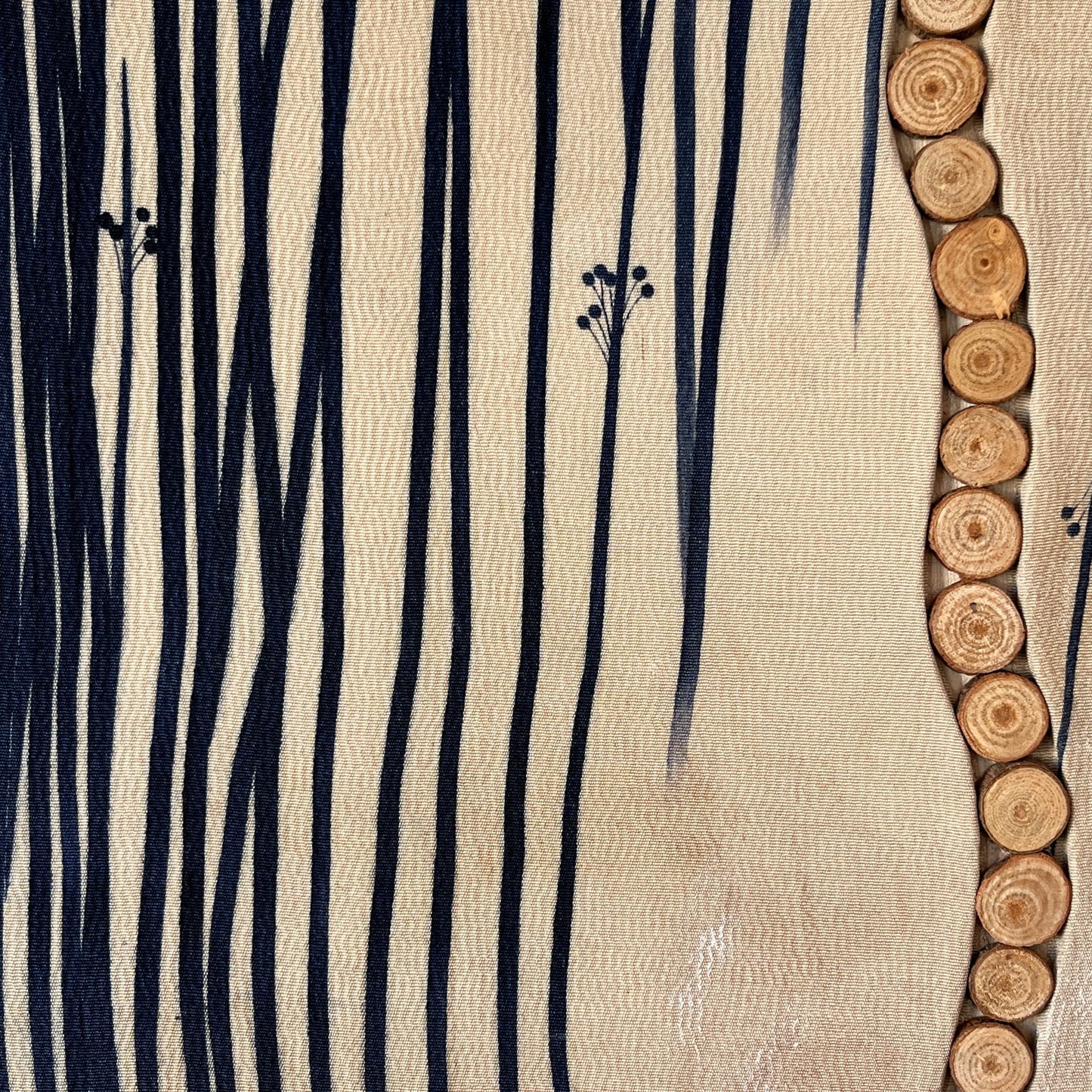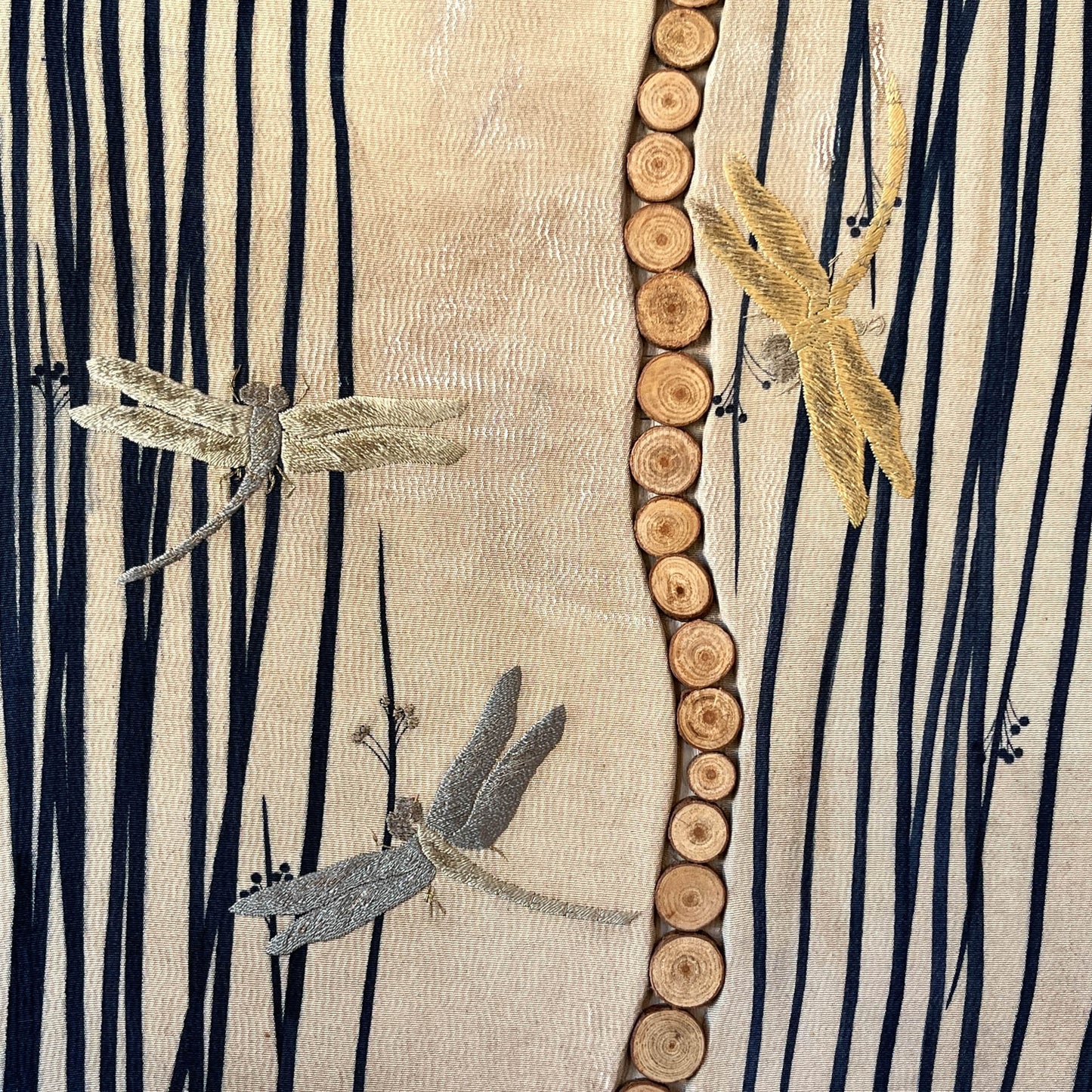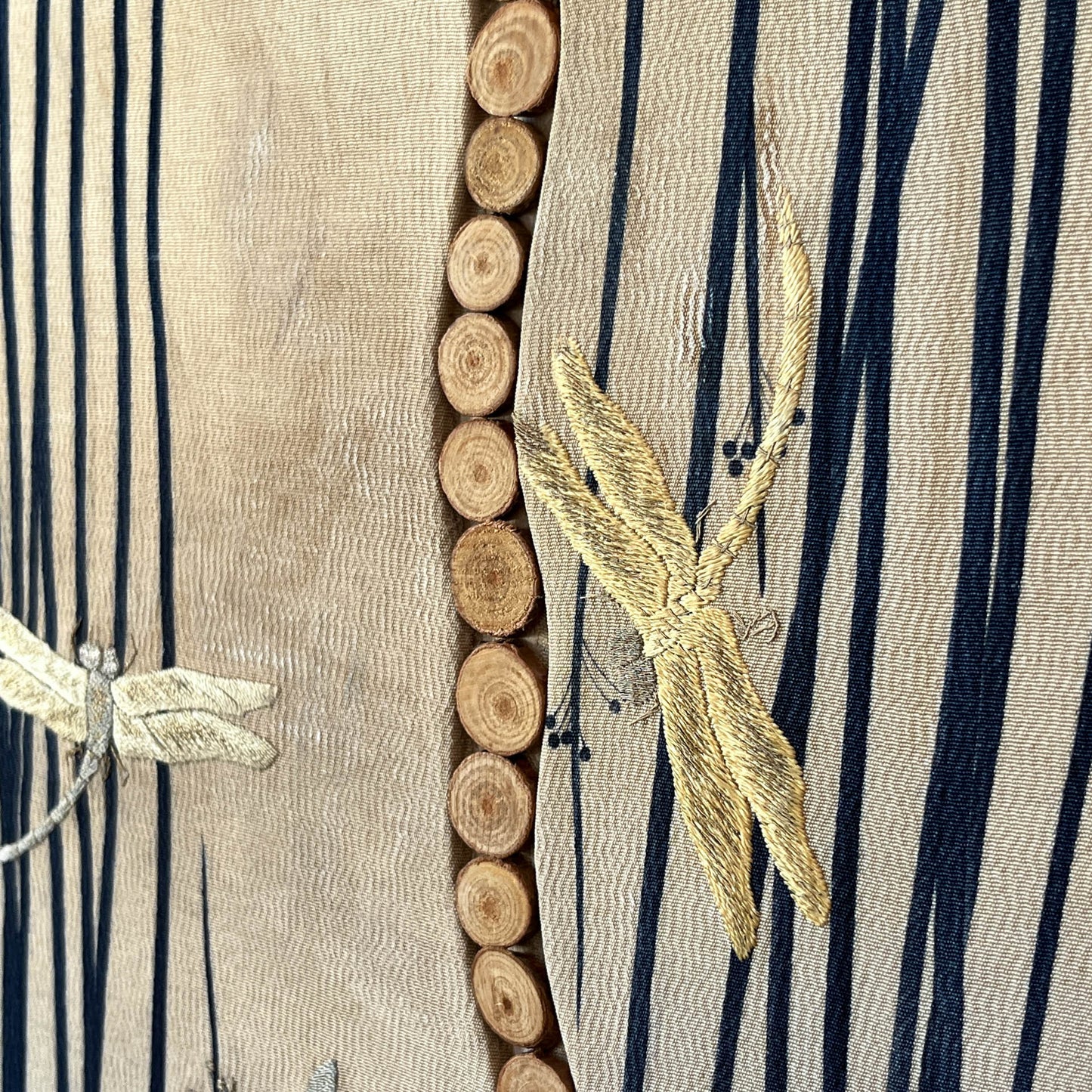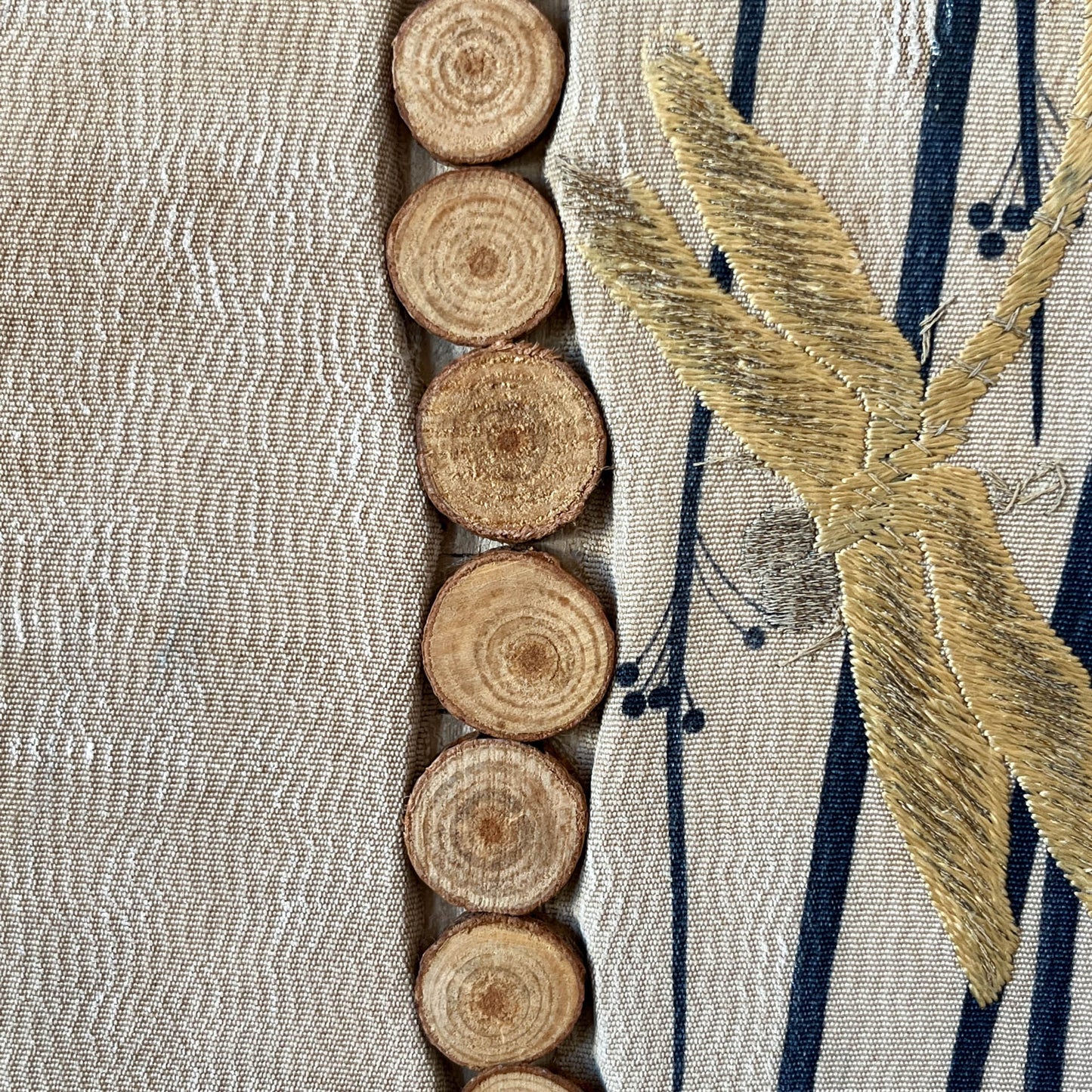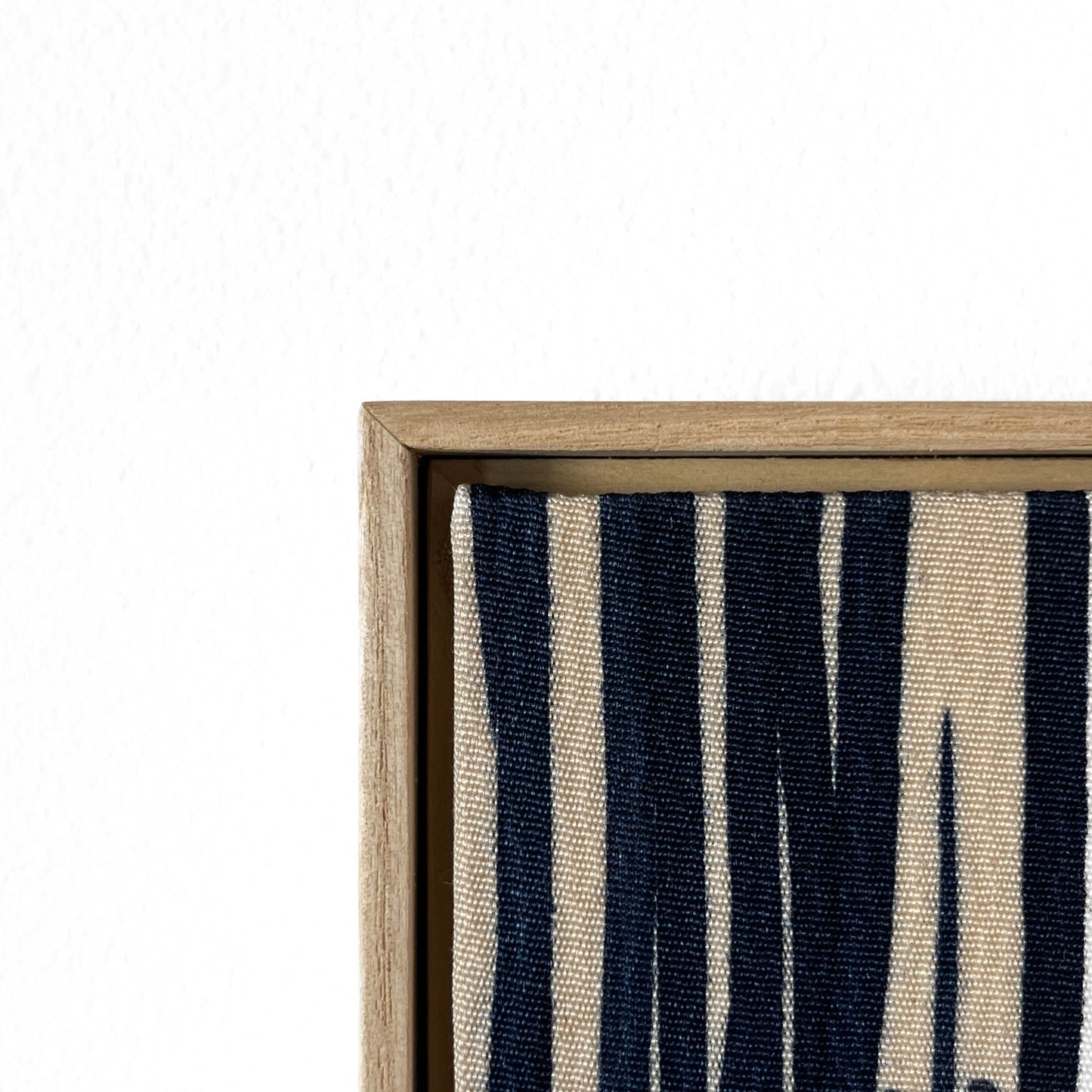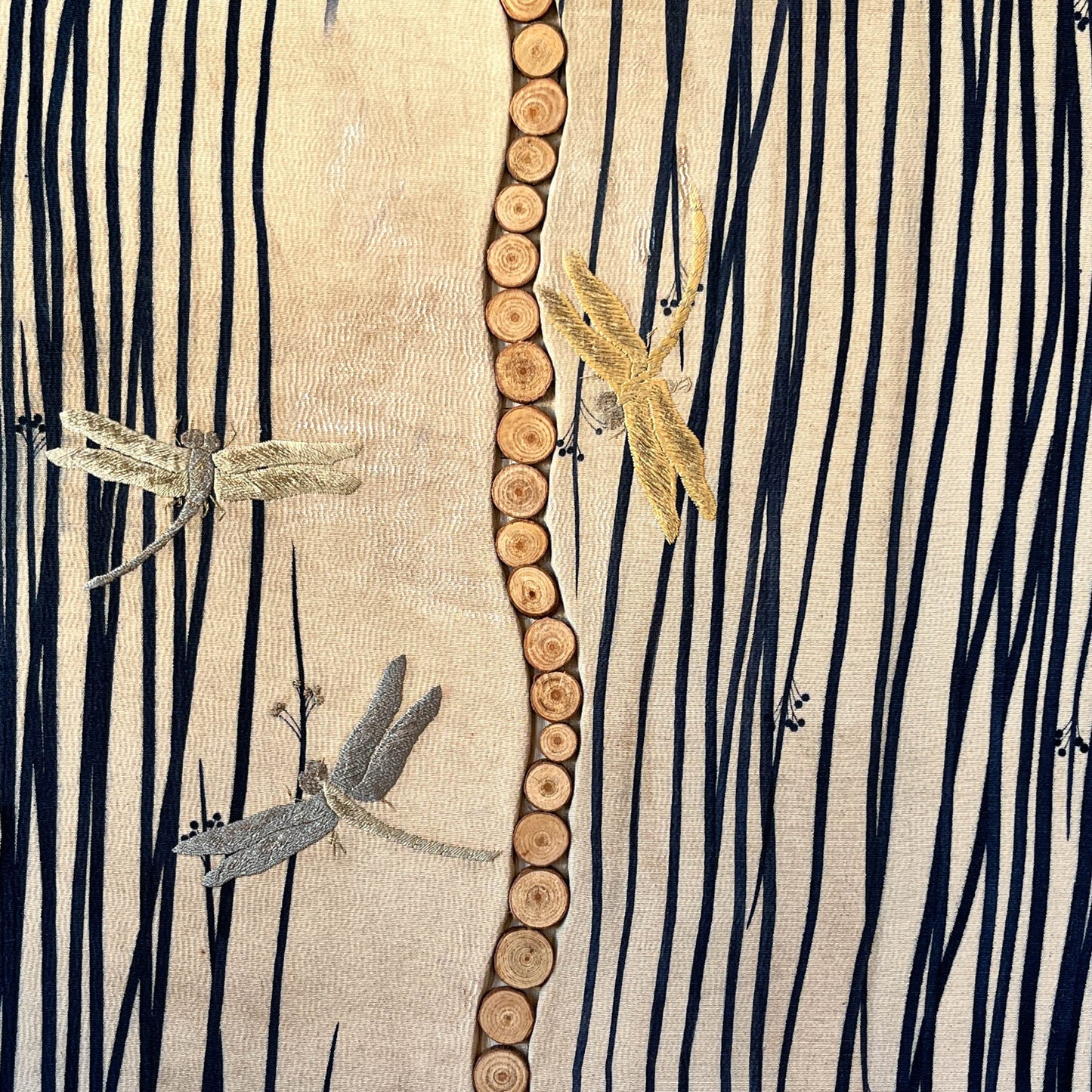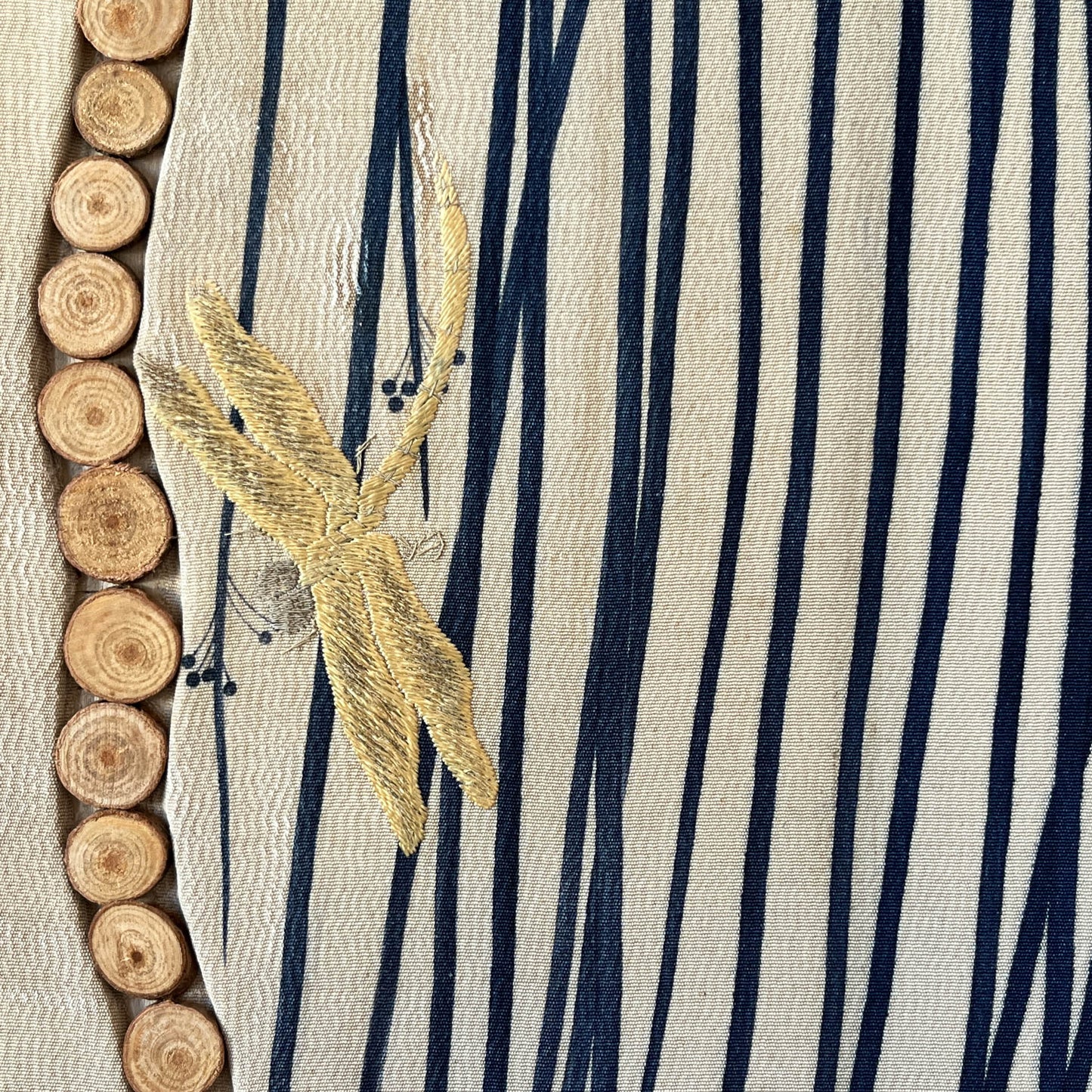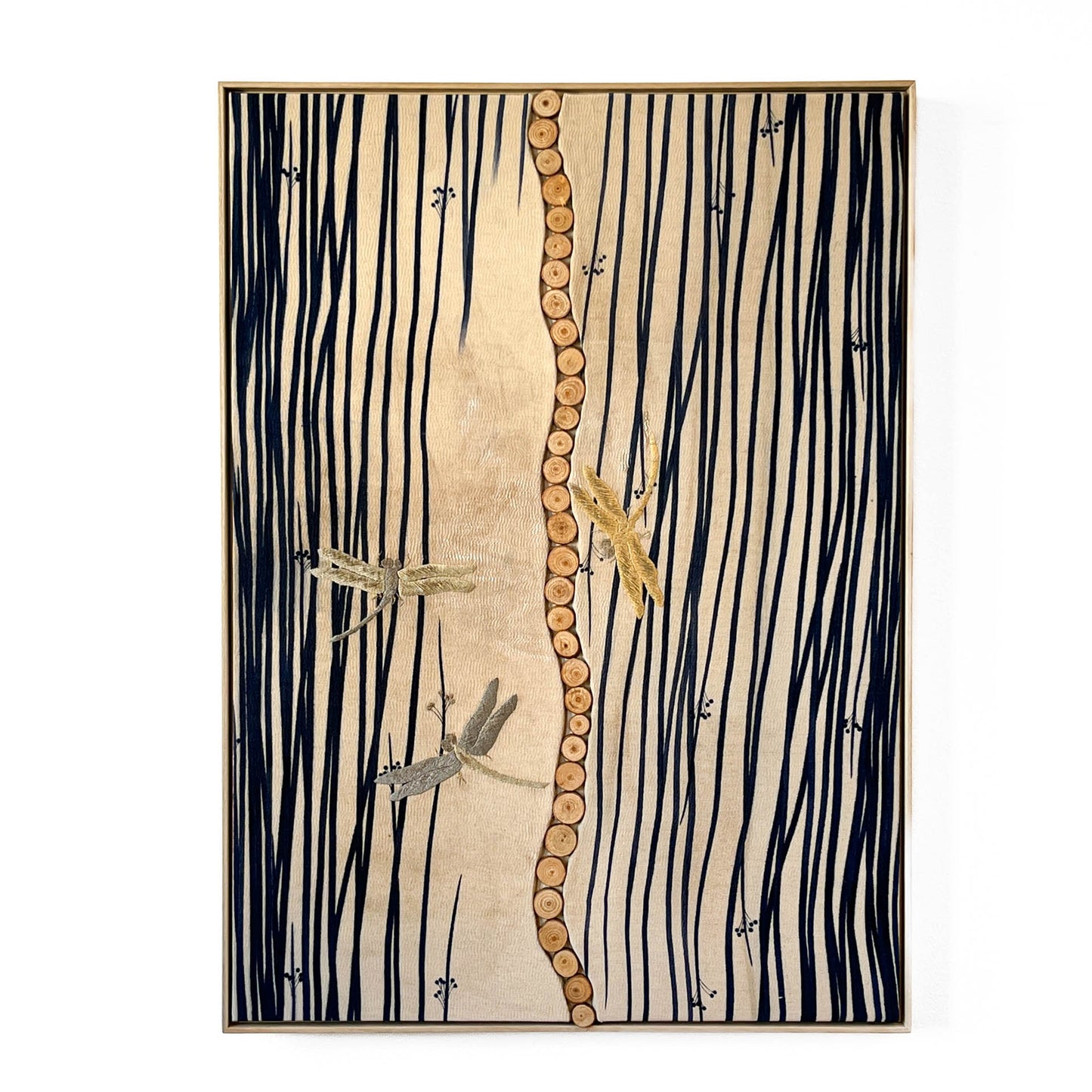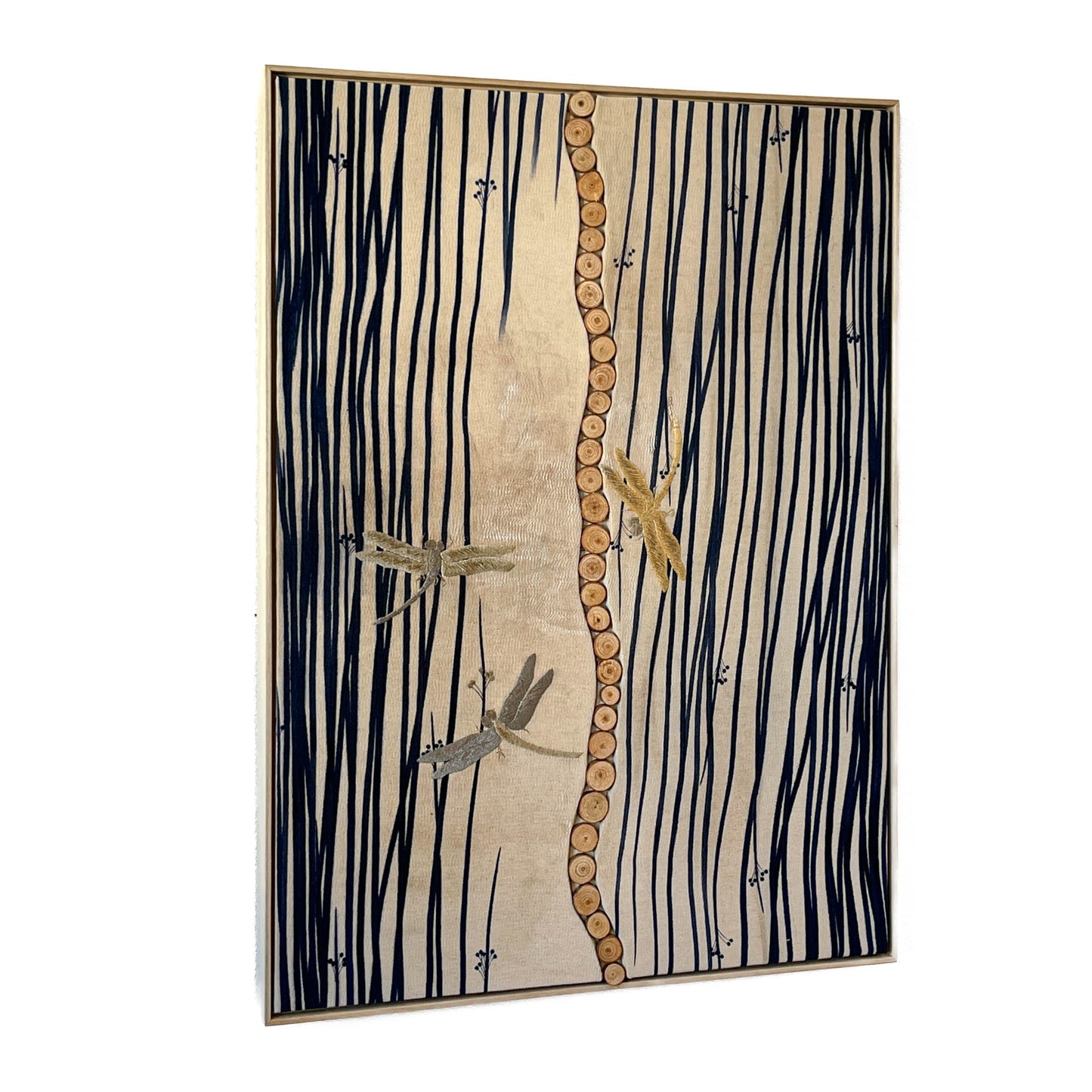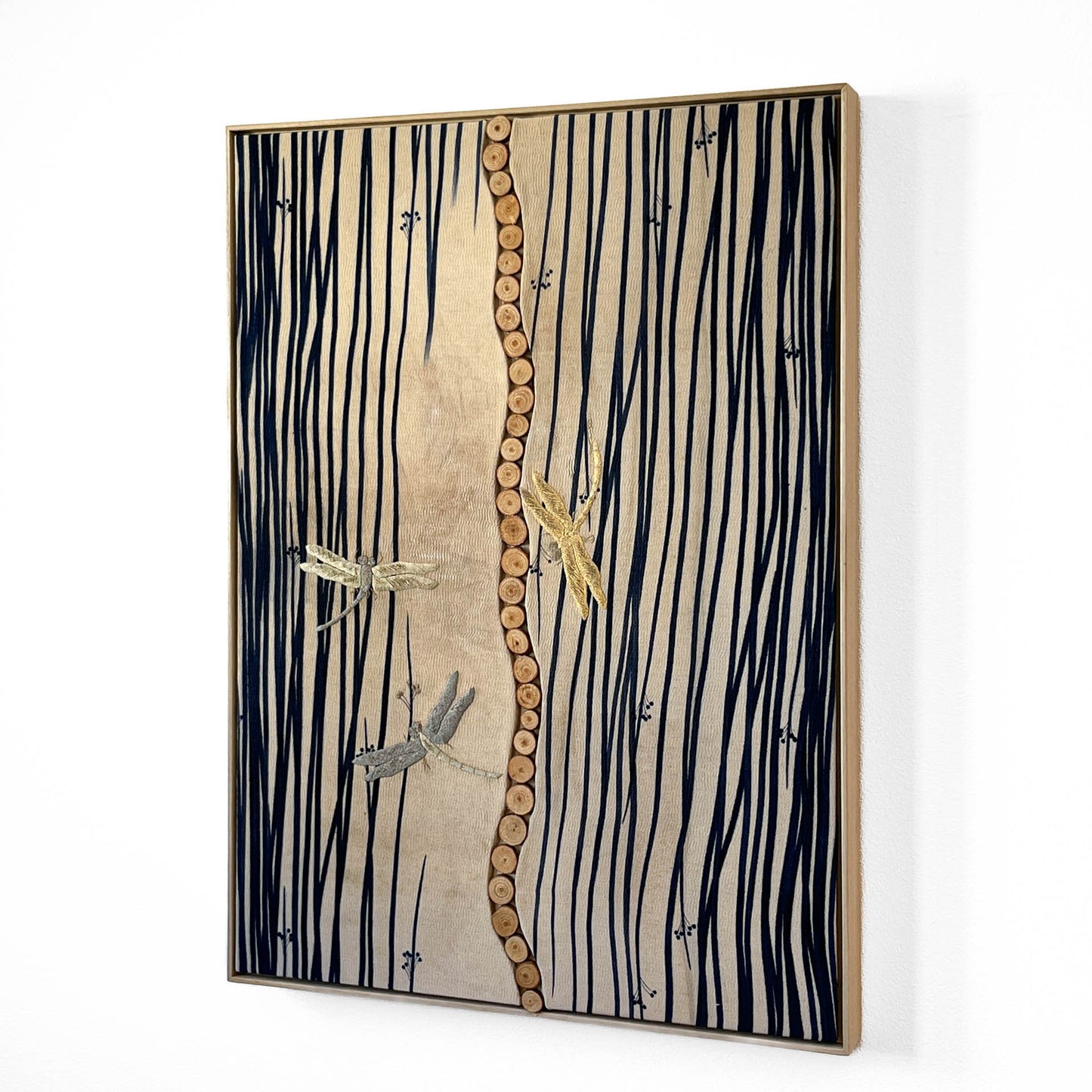Dragonfly Century ~Progress~
Dragonfly Century ~Progress~
Impossible de charger la disponibilité du service de retrait
Size
73cm x 53cm x 5cm
Materials
silk (outside-layer) , wooden frame (paulownia)
Story behind the work
This work is inspired by humid summer in Japan, uses sliced tree branches as a creative point, framed in paulownia wood originally used for a kimono chest-of-drawers.
It is elegantly framed with paulownia wood, a tree closely connected to kimono culture, and is filled with storytelling and sense of luxury.
In this artwork, the aim was to capture the splendor of Japanese nature, showing the dragonflies flying among river grass. Traditional Japanese culture, represented by the kimono, and wood, an integral element of Japanese craftsmanship, were used to bring this vision to life.
I used two pieces of obi that could no longer be used as clothing and branch slices that would normally be discarded to create the ultimate upcycled piece.
The marriage of Japanese natural materials - silk, paulownia (frame), and pine (branch slices for the center decoration) - and Japanese natural patterns - dragonflies and grass - expresses the magnificent beauty of Japanese nature from various angles.
The central bark decoration stands out as a distinctive feature of this work. Tree branch slices are interwoven among the grass painted on the obi, creating a tangible and authentic natural atmosphere.
Period / Story
The kimono used in this piece was originally crafted during the late Meiji period (1868-1912).
Explanation and meaning of pattern and colors
In Japan, dragonflies hold cultural significance and are often regarded as symbols of courage, strength, and happiness. The symbolism associated with dragonflies has deep roots in Japanese folklore and art. Here are some aspects of the dragonfly's symbolism in Japan:
-
Strength and Courage: Dragonflies are admired for their agile flight and strong wings. In Japanese culture, they are seen as symbols of strength and courage. The ability to move with speed and precision in flight has led to the belief that dragonflies embody the spirit of determination and resilience.
-
Samurai Symbolism: Dragonflies are sometimes associated with samurai warriors. The Japanese word for dragonfly, "tonbo" (蜻蛉), sounds similar to "tonbogiri" (蜻蛉切), which was the name of a legendary sword used by the samurai warrior Yoshitsune Minamoto. Dragonflies are also often depicted in samurai armor and weaponry.
-
Change and Transformation: The life cycle of a dragonfly involves a transformation from a nymph to a flying adult. This metamorphosis has led to associations with change and transformation in Japanese culture. Dragonflies are sometimes considered symbols of maturity and self-realization.
-
Joy and Happiness: Dragonflies are seen as harbingers of joy and happiness. Their presence is thought to bring positive energy and good fortune. In some regions of Japan, dragonflies are even considered to be messengers of deceased ancestors, bringing comfort to the living.
-
Seasonal Symbolism: Dragonflies are associated with summer in Japan. Their presence during the warm months adds to their symbolism of joy and vitality. They are often featured in summer-themed art and poetry.
Overall, dragonflies hold a positive and multi-faceted symbolism in Japanese culture, representing qualities that are admired and valued. Their presence in art and folklore reflects the deep connection between nature and cultural symbolism in Japan
About the frame
Kiritansu - chest-of-drawers for kimono, is traditionally made from paulownia wood, a uniquely Japanese material closely tied to the world of kimonos.
Paulownia wood is known as the lightest wood in Japan, prased for its natural luster, resistance to moisture, and resilience against cracking. Since ancient times, it has been used in crafting furniture, chests, and musical instruments.
During the Edo period, it became customary to store cherished kimonos in paulownia chests, which offered fire resistance and protection from moisture and insects.
Traditionally, when a daughter was born, a paulownia tree would be planted. Upon her marriage, the tree would be cut down, and the wood would be used to craft a chest for her as a wedding gift.
Following the Ansei Earthquake during the late Edo period in 1855, paulownia chests gained popularity due to their ability to withstand fires and even float in water, thereby safeguarding their contents during floods.
I use antique kiritansu that can’t be used as furniture anymore to create basis and frames for my works. It adds them even more authentic atmosphere of traditional wabisabi spirit. Can you feel it?
Decoration Advice
Canvas can be displayed on a table, wall, etc. Hanging on a wall requires hooks, tacks or nails. It can also be displayed propped up on an easel. Ideal for a room makeover, housewarming gift, present, or souvenir for a loved one.
Precaution
All the works are made from real kimonos, antiques and vintages. For this reason, the fabric may have traces of long-term use and minor fabric damages. In case there are any scratches or stains, we always add a photo of the area on the item page, so please check before purchasing. Regarding precaution, cancellation and refund policy, please refer to the refund policy in the footer section of the site for information.
